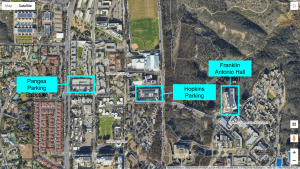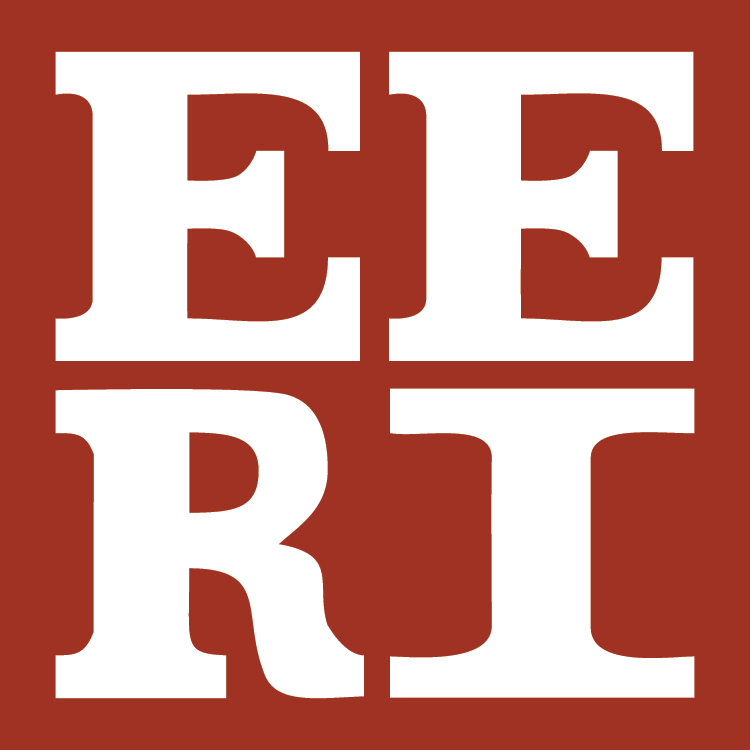6th Kenji Ishihara Colloquium Series on Earthquake Engineering
USGS Software Tools for Site-Specific Ground Motion Hazard Analysis
A Three-Quarter Day Short Course
Nicolas Luco, Supervisory Research Structural Engineer, U.S. Geological Survey
Peter Powers, Research Geophysicist, U.S. Geological Survey
Jorge F. Meneses, Senior Principal Geotechnical Engineer, Worley Consulting
Friday, September 13th, 2024, 8am-2:30pm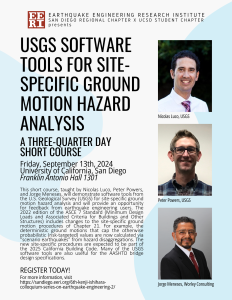
University of California, San Diego
Franklin Antonio Hall 1301
This short course will demonstrate software tools from the U.S. Geological Survey (USGS) for site-specific ground motion hazard analysis and will provide an opportunity for feedback from earthquake engineering users. The 2022 edition of the ASCE 7 Standard (Minimum Design Loads and Associated Criteria for Buildings and Other Structures) includes changes to the site-specific ground motion procedures of Chapter 21. For example, the deterministic ground motions that cap the otherwise probabilistic (risk-targeted) values are now calculated via “scenario earthquakes” from hazard disaggregations. The new site-specific procedures are expected to be part of the 2025 California Building Code. Many of the USGS software tools are also useful for the AASHTO bridge design specifications.
MEET THE INSTRUCTORS
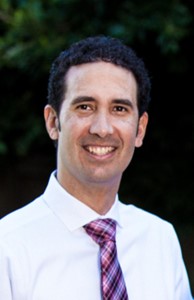
Dr. Nicolas Luco
Nico is a Supervisory Research Civil Engineer with the U.S. Geological Survey (USGS) at its Geologic Hazards Science Center in Golden, Colorado. There he serves as the Project Lead for the National Seismic Hazard Model, as of 2024. He also serves as a USGS Liaison on numerous external engineering committees that develop the seismic provisions of U.S. building codes, including the American Society of Civil Engineers (ASCE) Seismic Subcommittees for the ASCE 7 and 41 Standards. Prior to joining the USGS in 2004, he was a Senior Analysis Engineer with the insurance risk modeling company AIR Worldwide Corporation. He earned his PhD and BS in civil/structural engineering, and an MS in statistics, from Stanford University; his MS in civil/structural engineering is from the University of California, Berkeley.
Dr. Peter Powers
Peter Powers is a research and development geophysicist at the U.S. Geological Survey. Peter started his career as a geologist and worked in both the mining and tech sectors before attending the University of Southern California, from which he received a PhD in geophysics and seismology. He began his time at the USGS in 2008 as a Global Earthquake Model (GEM) post-doc and developer of OpenSHA and the Uniform California Earthquake Rupture Forecast version 3 (UCERF3). He now develops software and tools to support updates to USGS national hazard models and related research.
Dr. Jorge F. Meneses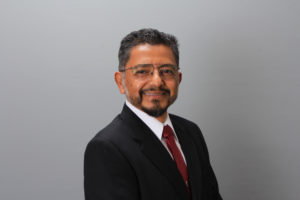
Dr. Jorge F. Meneses is a Senior Principal Geotechnical Engineer with Worley Consulting and has more than 30 years of consultancy, project management, research, and teaching experience, in both private industry and research institutions in the field of geotechnical and earthquake engineering. He has been involved in numerous projects serving as a technical lead in geotechnical earthquake engineering and foundation engineering across the country and various markets including water, nuclear, transportation, high rise buildings, energy, schools, hospitals, commercial and industrial. Dr. Meneses frequently acts as a peer reviewer for technical conferences and technical journal publications, is a guest speaker for domestic and international conferences, and has published more than 60 technical publications. He is currently a part-time faculty member in the graduate school of San Diego State University. He was the President and Founder of the Earthquake Engineering Research Institute (EERI) San Diego Chapter, California Seismic Safety Commissioner, Member of the EERI Board of Directors, Honorary Chair of the ASCE Geo-Institute San Diego Chapter, ex-Member of the ASCE 7-16 (Minimum Design Loads for Buildings and Other Structures), member of the ASCE 1 (Geotechnical Analysis, Design, Construction, Inspection and Monitoring of Nuclear Safety-Related Structures) and ASCE 7-28 Committees, member of the Academy of Geo-Professionals, member of the Academy of Geo-Professionals, and a Fellow of the American Society of Civil Engineers (ASCE).
PROGRAM
| Time | Topic/Speaker | |
|---|---|---|
| 8:00am | 9:00am | Registration and Breakfast |
| 9:00am | 9:15am | Welcome and Overview of Program |
| 9:15am | 9:45am | ASCE 7-22 Chapter 21 Site-Specific Ground Motion Procedures Jorge F. Meneses |
| 9:45am | 10:30am | USGS Application of Site-Specific Procedures for ASCE 7-22 Chapter 22 Ground Motion Maps Nicolas Luco |
| 10:30am | 10:45am | Break |
| 10:45am | 11:30am | Site-Specific Hazard Curves from USGS Earthquake Hazard Toolbox Peter Powers |
| 11:30am | 12:00pm | Updated USGS Risk-Targeted Ground Motion Calculator Nicolas Luco |
| 12:00pm | 1:00pm | Lunch |
| 1:00pm | 1:30pm | Site-Specific Disaggregations from USGS Earthquake Hazard Toolbox Peter Powers |
| 1:30pm | 2:00pm | Deterministic Response Spectra from USGS Earthquake Hazard Toolbox Peter Powers |
| 2:00pm | 2:30pm | Other Current and Future USGS Software Tools Peter Powers and Nicolas Luco |
VENUE
University of California, San Diego
Franklin Antonio Hall 1301
3180 Voigt Drive
La Jolla, CA 92093
REGISTRATION
Click here to register for the short course.
LODGING
Click here for a list of hotels near UCSD.
PARKING
There are two structures available for parking near Franklin Antonio Hall: Hopkins and Pangea. The closest parking structure to the venue is Hopkins Parking Structure (view here or here), located on Voigt Dr. off of Hopkins Dr. Please park on Level 7 (top floor – Parking Lot P347) where there are 92 visitor parking spaces. No other levels have visitor parking.
If Hopkins is full, please go to Pangea Parking Structure (view here or here), located on Pangea Dr. off of N. Torrey Pines Rd. Please park on Level 6 (top floor – Parking Lot P376) where there are 100 visitor parking spaces. The 5th floor only has 9 visitor parking spaces.
Parking can be paid for at a pay station within the structure, or through the ParkMobile app or website. More information can be found here.
Click image below to see the parking structures and venue highlighted (from https://maps.ucsd.edu/map/default.htm):
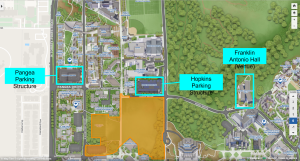
Click image below to see the parking structures and venue highlighted on Google Maps (from https://act.ucsd.edu/maps/):
